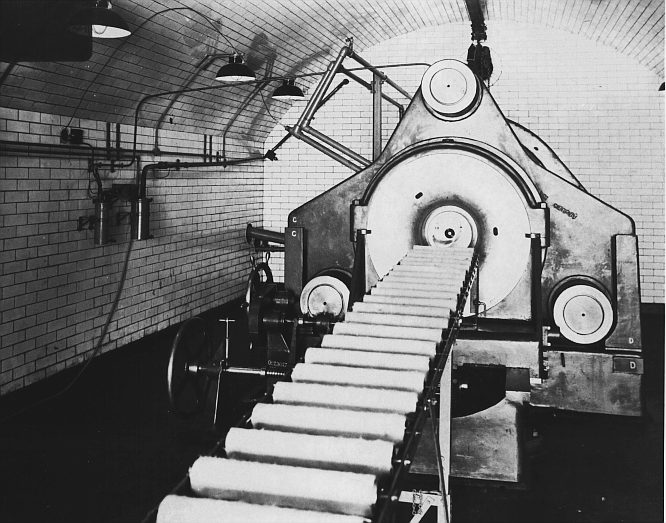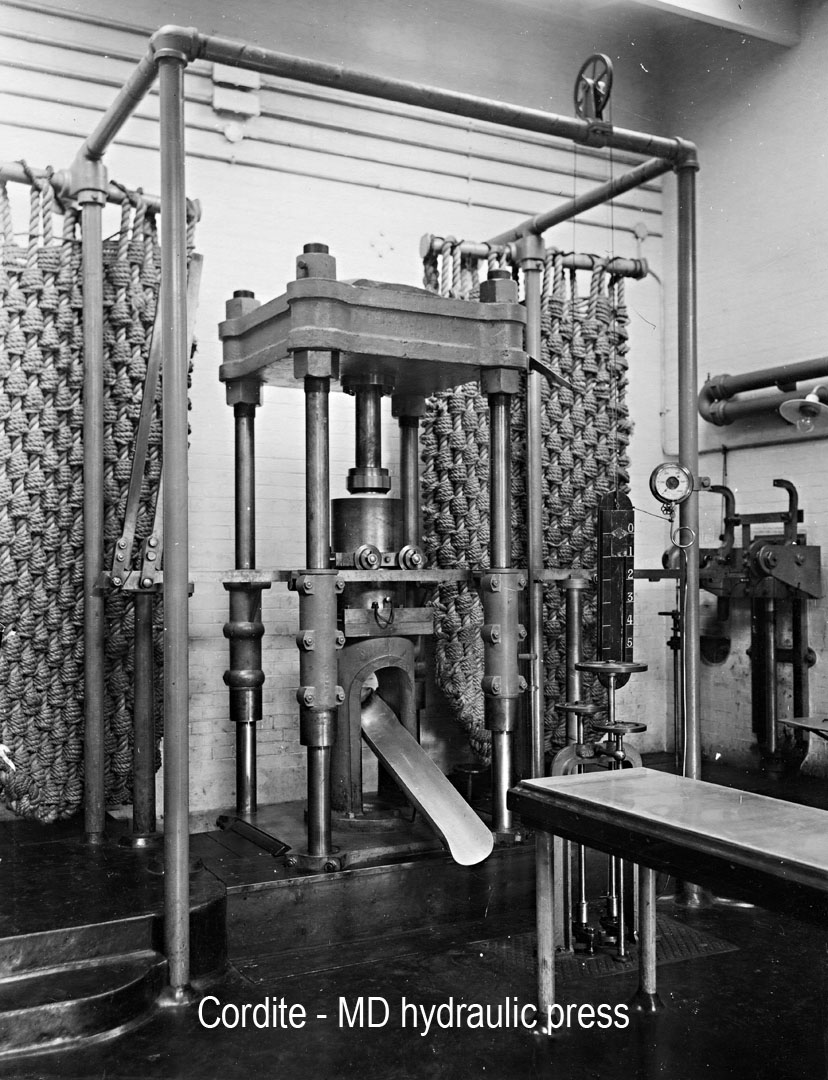Cordite
paste drying and pressing:
The paste sheets were dried with a current of warm air in special
trucks designed for the purpose, which could be coupled into a hot-air
system.
A typical paste drying stove is shown below:

After drying, the paste was installed in an incorporator, where any
additives/solvents were included. The 'incorporator' was in fact, an
adapted dough-making machine. During this process, the mixture became
gelatinised.

Finally, the cordite was rolled and/or pressed into the required shape
- some uses required the traditional long cords (from which the name
arises), others required large blocks for assisted aircraft take-off
systems for example. This required a number of hydraulic presses which
of course differed greatly in size and shape. See two examples below:


Horizontal press for large-diameter cordite.
Vertical press for traditional cordite.



